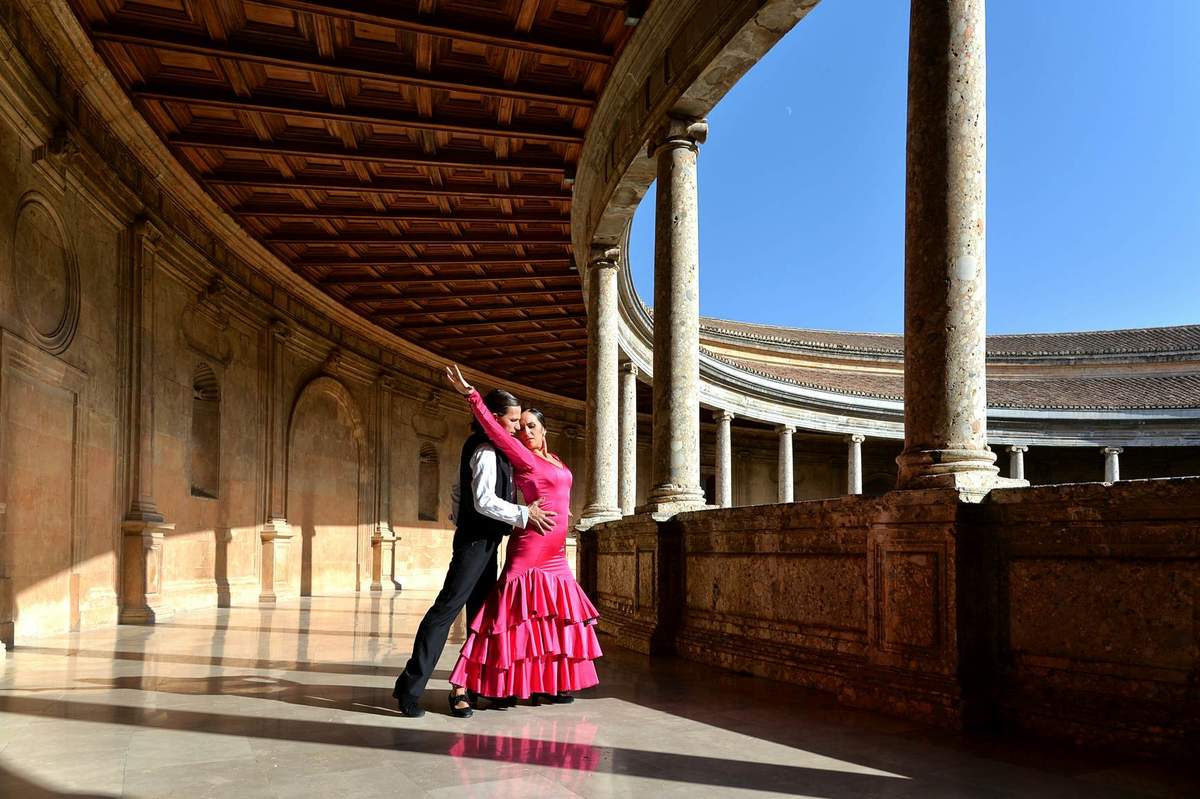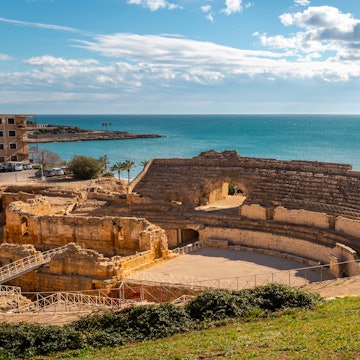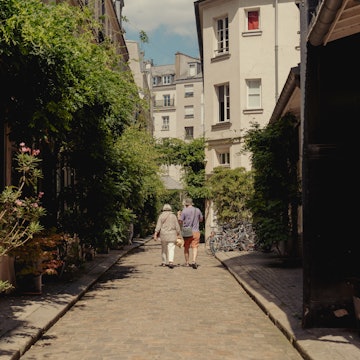

Basílica de Nuestra Señora del Pilar rising above the River Ebro in Zaragoza, Spain. Eloi_Omella/Getty Images
Conveniently located between Spain’s big hitters Madrid and Barcelona, the Aragonese capital, Zaragoza, holds its own with flying colors. While it may not have Madrid’s grand scale or Barcelona’s beaches, it more than makes up for it with intriguing UNESCO World Heritage sites, from ancient Roman ruins to exquisite Mudéjar architecture.
As the city where Francisco de Goya began his artistic journey, Zaragoza also offers a unique glimpse into the early works of one of Spain’s greatest painters, his early frescoes from the 1780s adorning the Basílica de Nuestra Señora del Pilar.
Beyond the museums, art and monuments, Zaragoza’s lively tapas bars, food markets and bold Aragonese flavors invite visitors to slow down and savor the region’s culinary soul.
Intrigued? Here's what every first-time visitor needs to know to plan the perfect trip.

When should I go to Zaragoza?
One of the best times to visit Zaragoza is spring (March to May), when mild temperatures and fewer visitors make the city especially inviting. During Easter, parades take over the streets, and in April, locals celebrate Aragon’s patron saint on Día de San Jorge. As spring rolls into summer, temperatures can soar up to 35°C (95°F). While afternoons are best spent enjoying a siesta, the city comes alive again at night with open-air dining and lively bars.
Autumn is perhaps Zaragoza’s most magical season, especially in October during the Fiestas del Pilar, a week-long celebration filled with music and parades honoring the Virgin Mary's first apparition. However, the festival also draws large crowds, driving up hotel prices and filling accommodations quickly so book well ahead. Winter (December to February) is the quietest season, ideal for museum visits and warming up with rich local dishes like chilindrón chicken stew or churros, doughnut-like batons dipped in a thick hot chocolate sauce. Beware the fierce cierzo wind that adds an extra chill at this time of year.
How much time should I spend in Zaragoza?
Two days gives a good idea of Zaragoza’s highlights, including the main museums, the Aljafería palace and fortress, religious sites and the city’s culinary heritage. However, if you extend your stay by a day or two, you’ll have more time to take in the beautiful architectural details, stroll through the city’s green spaces or even rent a car and explore the Aragonese countryside.
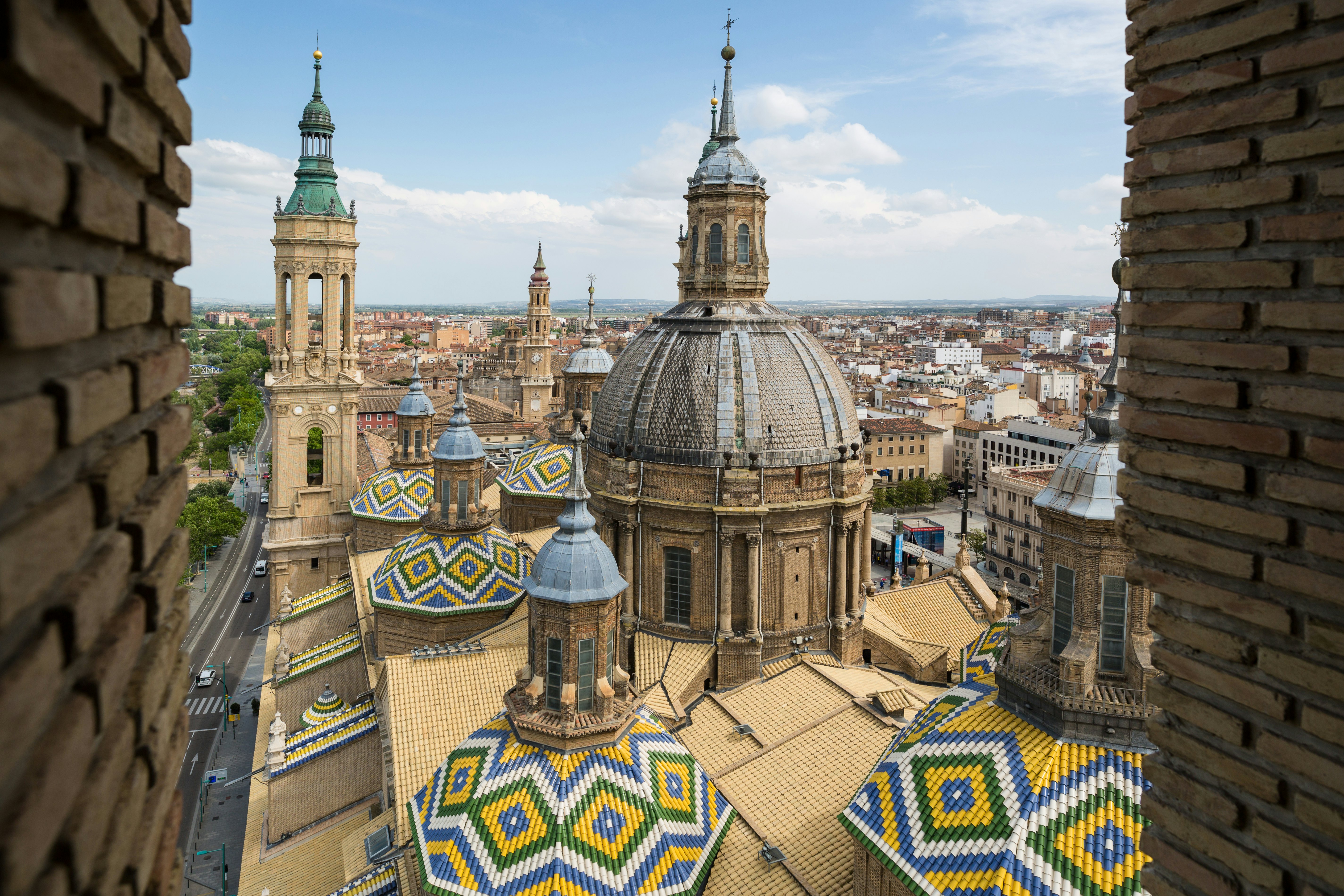
Is it easy to get in and around Zaragoza?
Zaragoza’s international airport is located 10km (6 miles) from the city center. Bus line 505 departs from stop T and takes 30 minutes to reach the city center. The tickets (single ticket, billete sencillo) can be bought online or from the driver and cost €4 (US$4.60). Taxis are also available right outside the exit.
Another convenient way to arrive in Zaragoza is by train, from cities such as Madrid or Barcelona, both about 1 hour and 20 minutes away. The central train station, Zaragoza-Delicias, is located 4km (2.5 miles) away from the city center and the old town. Both can be reached by taxis waiting outside the station (they are quicker and cheaper than taxis booked through ride-share apps) for about €10 (US$11.50). Alternatively, take the metro line C1 to the city center. The journey takes under 10 minutes and costs €1.80 (US$2.05). The old town, with many of the city’s main sights and foodie spots, is walkable.
Top things to do in Zaragoza
Zaragoza is known for its rich history, stunning architecture and mouthwatering Aragonese cuisine. From the Basílica del Pilar to the Moorish Aljafería Palace, the city’s cultural landmarks and lively tapas and bar scene offer a perfect blend of heritage and flavor.

Explore the city’s Roman roots
Among Zaragoza’s most compelling sights are the Roman ruins, including a forum, baths and theater. Founded around 15 BCE as Colonia Caesaraugusta after Emperor Augustus’s victory in the Cantabrian Wars, in northwestern Spain, Zaragoza began to thrive in the 1st and 2nd centuries. The Roman forum is located beneath El Seo Cathedral and Plaza del Pilar and exhibited in the Museo del Foro de Ceasaraugusta. Five minutes walk away from the forum is the compelling Museo del Teatro de Caesaraugusta, dedicated to the Roman theater found here in 1972. While the 6000-seat theater is visible from the surrounding streets, the museum gives background on Roman drama, the theater’s history and what happened to the site during post-Roman times.
Savor the Aragonese flavors
Aragonese cuisine is traditionally full of strong flavors – cured ham, tasty cheese, chicken stews, salted cod, olives, wine and rich chocolates – and visitors won’t go hungry here. In winter, the traditional chicken stew pollo al chilindrón is especially comforting, while tapas, such as migas, bread crumbs with bits of ham and grapes, and albóndigas de bacalao, meatballs made of salted cod, keep snackers happy year-round. The buzzing El Tubo neighborhood is the epicenter of the city’s tapas bars and heaves with eaters and drinkers – bar hopping is a popular pastime here. For a similar kind of buzz but without the party-oriented atmosphere, head to any of the city’s small plazas or the Central Market, Mercado Central, opened in 1903 in Plaza de César Augusto. Zaragoza also has a rich history in chocolate making, and popping over to the traditional pastry shops is always a treat – as are the city’s churros.

Visit the architectural marvels
The Aljafería Palace is the only large conserved example of Spanish Islamic architecture from the era of the taifas, independent Muslim kingdoms of the Iberian Peninsula. The palace was built in the late 11th century and showcases intricate Moorish design within its fortress walls – no wonder it is part of the Mudéjar Architecture of Aragon World Heritage Site. Equally striking is the baroque-style Basilica of Our Lady of the Pilar, built between the 17th and 18th centuries. Take a lift and then climb the remaining 109 steps atop the bell tower for the best views over the old town. Yet, the true highlight of the city’s Christian architecture might be the nearby La Seo Cathedral, mixing Romanesque, Gothic, Mudéjar, Renaissance and Baroque styles. Don’t forget to visit La Seo’s fabulous Museo de Tapices, which houses a collection of Flemish and French tapestries, possibly the finest collection of its kind in the world.
Let the city’s art impress
When visiting the Basilica of Our Lady of the Pilar, be sure to look up – high above, you can see the first frescoes painted by Francisco de Goya. One of them, Regina Martyrum (1780–1781), sparked a dispute between the young artist and a clergyman, prompting Goya to leave Zaragoza for Madrid where his bold style would be more appreciated. Today, Zaragoza pays tribute to its most famous painter with a museum dedicated to his work. Although currently undergoing renovations and set to reopen at the end of 2025, a selection of Goya’s pieces is temporarily on display at the Aljafería Palace. Just next to the Basilica of Our Lady of the Pilar, visit also La Lonja, a stunning Rennaissance-style trading exchange dating from the 16th-century, now transformed into one of Zaragoza’s most captivating exhibition halls.
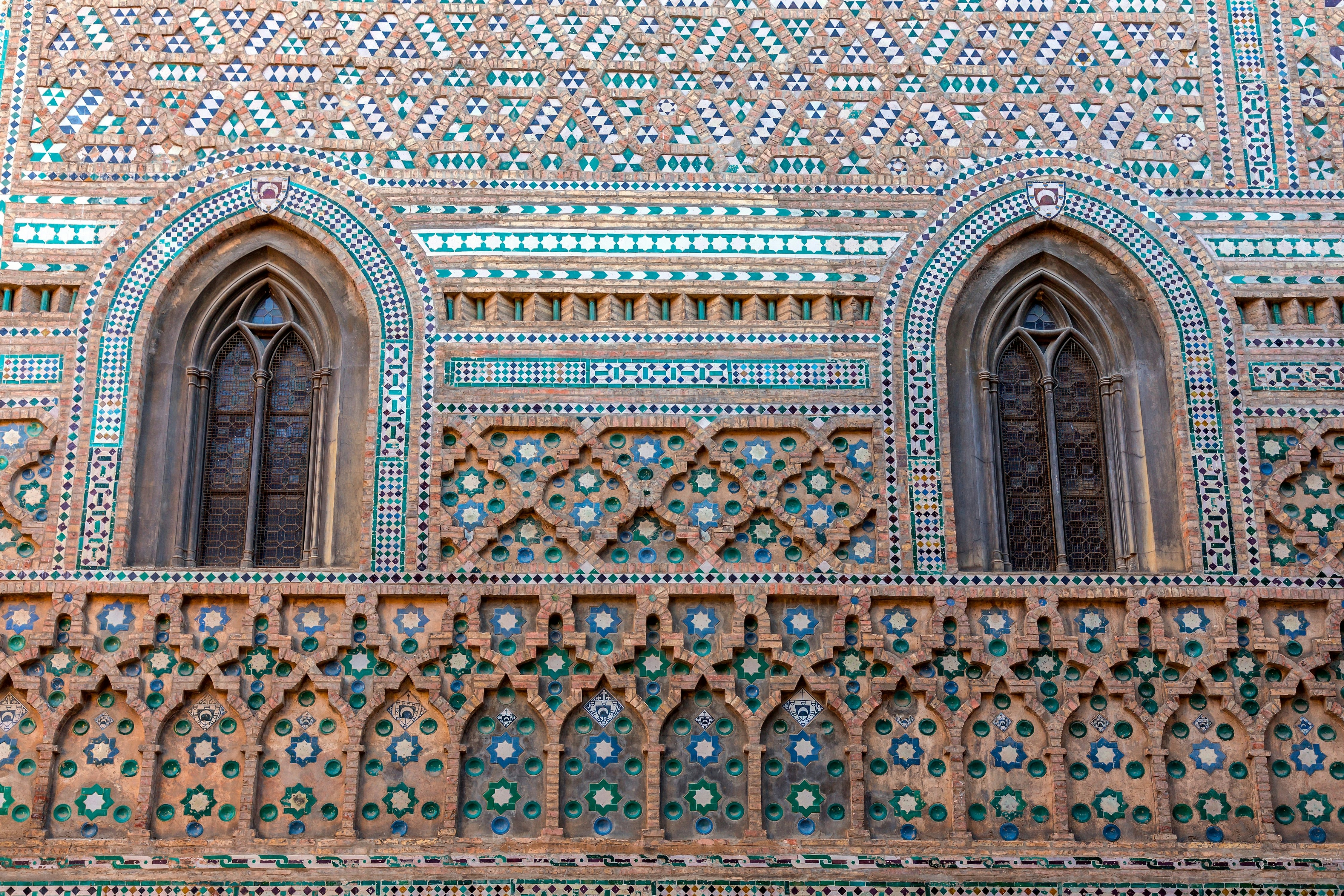
My favorite thing to do in Zaragoza
I love the earthy brown tones of Zaragoza’s cityscape, beautifully complemented by its lush green spaces. In Parque Grande José Antonio Labordeta, the Mirador del Rincón de Goya offers sweeping views over the city. Another stunning viewpoint – especially at sunset – is the Puente de Piedra (Stone Bridge) in the city center, where the Basílica del Pilar rises along the banks of the River Ebro. After watching the sun bathe the basilica in a golden glow, wander a few blocks down the alley from La Seo Cathedral and you’ll stumble upon charming plazas like San Pedro Nolasco and Plaza Santa Marta, where bars and restaurants buzz with locals enjoying the evening.
How much money do I need for Zaragoza?
More budget friendly than its neighbors, Madrid and Barcelona, a weekend in Zaragoza won’t break the bank – you can snatch a top-notch hotel for €120 (US$138) per night, whereas a bed in a hostel dormitory will set you back less than €40 (US$46). A budget of €100 (US$115) per day will see you eating and sleeping comfortably.
Hotel room for two: €50–160 (US$57–183)
Bed in a hostel: €20–40 (US$23–46)
One tapa in the market hall or a bar: €2–6 (US$2.30–6.90)
Main course in an upscale bistro: €20 (US$23)
Glass of wine: €3-4 (US$3.40-4.60)
Beer at a bar: €1.50-2.50 (US$1.70–2.90)
Breakfast in a cafe: €5.50–8.50 (US$6.30–9.75)
Taxi from the train station to the old town: around €10 (US$11.50)
E-bike for half a day: €20 (US$23)
What language should I speak in Zaragoza?
While English is widely spoken in Zaragoza, it's not used as much – particularly in smaller, more traditional shops – as it is in Madrid or Barcelona. A warm smile and a few key Spanish phrases, from por favor (please) to gracias (thank you), will go a long way.






